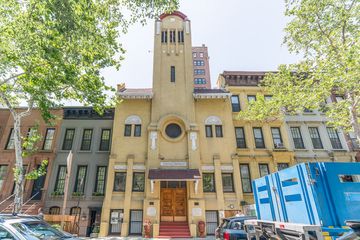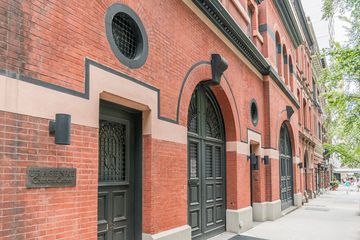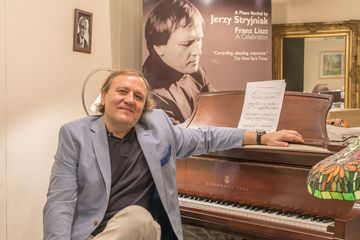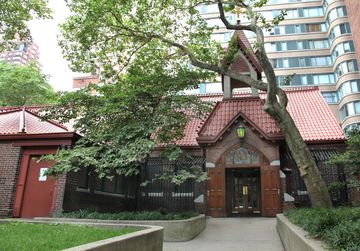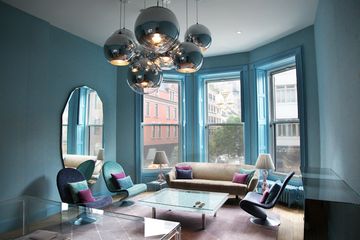Expecting to gaze on the exquisite jewels housed in Marie-Helene de Taillac, I was surprised to find myself being looked at instead: Two giant eyes in the display case, containing colorful jewelry in their irises, stared at me from the other side of the window. This was just a taste of the sense of fun and whimsy that I found within the dazzling boutique. The space itself reminded me of a cross between Alice in Wonderland and a room in Versailles. Pink and purple plush sofas occupied the center of the area while crystal light fixtures and walls embroidered with the Marie-Helene crown and fish crest lined the room. The manager, Sarah, who entered the room with a tiny, fluffy dog, explained that Marie-Helene specifically wanted the room to look like a modern take on one of Marie Antoinette's chambers, as opposed to the Paris and Tokyo stores, which are very modern. She envisioned something cozy and elegant, in order to match the ambience of the Upper East Side. While showing me some of their stunning necklaces, earrings and rings, Sarah informed me that Marie-Helene's workshop is at the Gem Palace in India. After working with the family that owns the Palace during an internship, Marie-Helene fell in love with the techniques they used, the respect for handmade items, and attention to detail. Sarah, who has been working at the store since it opened in 2013, met Marie-Helene in India, and was immediately enchanted by the designer's use of stones and color. As Sarah showed me delicate pieces adorned with red spinels (Marie-Helene's favorite stone) and rainbow moonstone, she elaborated, "The beauty of each stone is that you can't find it anywhere else. At the store, we end up saving and saving until we can buy the piece we have been admiring. "Even though Marie-Helene's specialty is stones, she creates beautiful pieces with metal, as well. There was a bracelet made from woven 22 carat gold. It was so light in my hand that it seemed like string. I also took note of a small, new collection made simply with platinum and diamonds, for a "cocktail party" look. The real creativity, however, comes with the use of colorful stones. One collection drew on sky images, with jewels worked into stars and lightning bolts. Another used body parts, with tiny eye earrings and gems in mouth shapes. Another collection featured shells. I was taken with a set of rings that, instead of closing over the top of the finger, hugged it and held jewels in the gaps between the fingers. Sarah noted that the design was created by Marie-Helene's niece, and was inspired by the way jewels are displayed to show their color – between the fingers. Sarah then guided me upstairs to a private showroom, where industry meetings and private showings are held. It also functions as her office. No less colorful and spectacular, the room features a table containing 46, 000 carats of aquamarine. I noticed a gilded mirror on the table, similar to one in the downstairs display room, set with small gems. Sarah told me that Marie-Helene had found the set of mirrors in a flea market outside of Paris. I appreciated the fact that Marie-Helene works with fine stones, which result in jewelry ranging from $700 to $50, 000, but that she can also find joy in the treasures of local markets. Sarah agreed with me, and said that the same principle applies to Marie-Helene's designs: she can see the infinite glamor of an unadorned, well-cut stone. As Sarah so perfectly stated, "There is beauty in simplicity. "
